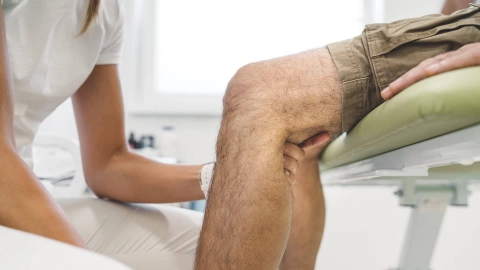ICD-Code M71.2: Synovial cyst of popliteal space [Baker]
You have a fluid-filled cavity in the hollow of your knee.
Cavities like these may be the joint capsule bulging. But such cavities can also form when fluid collects in bursas in the hollow of the knee. Joints are encased in a joint capsule. The joint capsule contains synovial fluid. This enables the bones to slide easily past one another. A bursa is a cushion of connective tissue filled with fluid. For example, there is a bursa beneath tendons or between bones and skin. The bursa prevents the tissue from rubbing together. A bursa also enables pressure to be distributed better.
Fluid-filled cavities in the hollow of the knee can form if the knee becomes inflamed or gets injured, for example. It may be possible to feel the cavity as a swelling in the hollow of your knee. The location may also be painful.
Additional indicator
On medical documents, the ICD code is often appended by letters that indicate the diagnostic certainty or the affected side of the body.
- G: Confirmed diagnosis
- V: Tentative diagnosis
- Z: Condition after
- A: Excluded diagnosis
- L: Left
- R: Right
- B: Both sides
Further information
Source
Provided by the non-profit organization “Was hab’ ich?” gemeinnützige GmbH on behalf of the Federal Ministry of Health (BMG).



